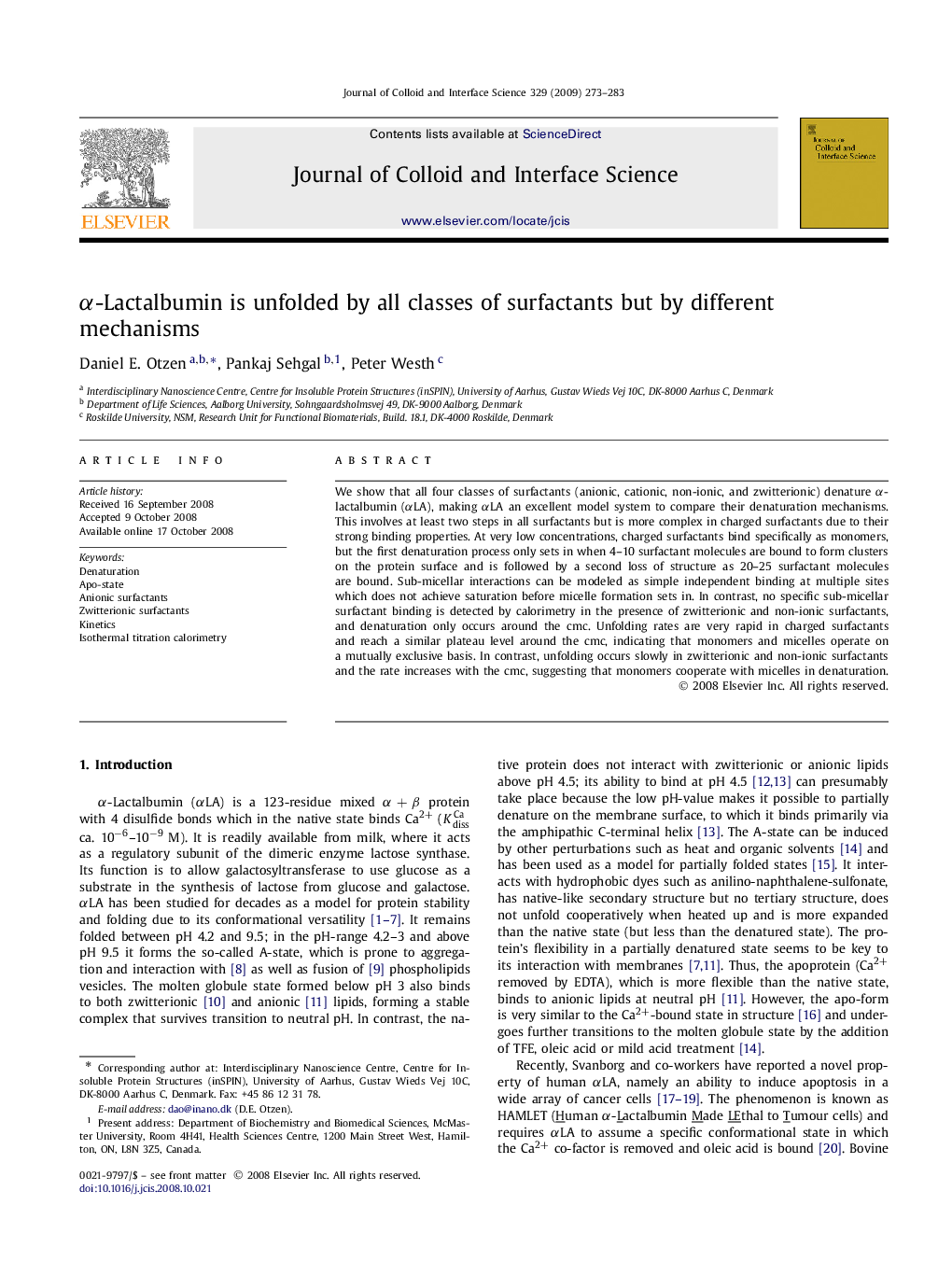| Article ID | Journal | Published Year | Pages | File Type |
|---|---|---|---|---|
| 610704 | Journal of Colloid and Interface Science | 2009 | 11 Pages |
We show that all four classes of surfactants (anionic, cationic, non-ionic, and zwitterionic) denature α-lactalbumin (αLA), making αLA an excellent model system to compare their denaturation mechanisms. This involves at least two steps in all surfactants but is more complex in charged surfactants due to their strong binding properties. At very low concentrations, charged surfactants bind specifically as monomers, but the first denaturation process only sets in when 4–10 surfactant molecules are bound to form clusters on the protein surface and is followed by a second loss of structure as 20–25 surfactant molecules are bound. Sub-micellar interactions can be modeled as simple independent binding at multiple sites which does not achieve saturation before micelle formation sets in. In contrast, no specific sub-micellar surfactant binding is detected by calorimetry in the presence of zwitterionic and non-ionic surfactants, and denaturation only occurs around the cmc. Unfolding rates are very rapid in charged surfactants and reach a similar plateau level around the cmc, indicating that monomers and micelles operate on a mutually exclusive basis. In contrast, unfolding occurs slowly in zwitterionic and non-ionic surfactants and the rate increases with the cmc, suggesting that monomers cooperate with micelles in denaturation.
Graphical abstractContrasting mode of action of ionic and non/zwitterionic detergents on α-lactalbumin. In the former case, monomers and micelles act separately, in the latter they collaborate.Figure optionsDownload full-size imageDownload as PowerPoint slide
